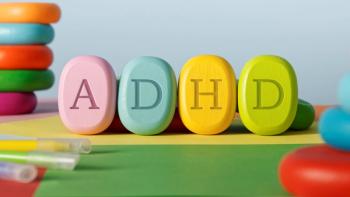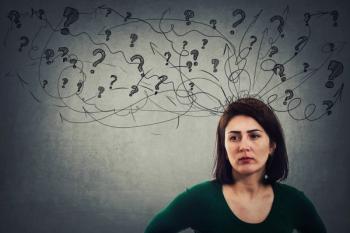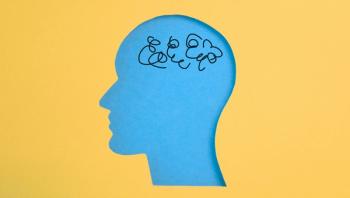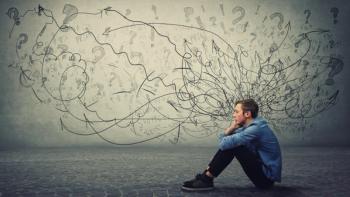SPECIAL REPORT: SLEEP DISORDERS
Unlike psychiatry, sleep medicine has never established a consensual definition of what constitutes a sleep disorder. In psychiatry, the DSM has provided a general definition of mental disorders since its third edition, guiding classification and diagnosis.1 However, from the Diagnostic Classification of Sleep and Arousal Disorders (1979)2 to the current International Classification of Sleep Disorders (ICSD-3-TR; 2023),3 sleep disorder classifications have evolved pragmatically without a clear conceptual framework. Although the ICSD-3-TR is preferred by sleep clinicians and researchers over the DSM and ICD, it lacks a structured general definition. This absence complicates the distinction between normal and pathological sleep, affects clinical practice, and possibly weakens the unity of the field. To address this gap, we develop an account of what constitutes a sleep disorder based on the harmful dysfunction analysis (HDA).4,5 As an illustration, we apply this approach to the classification of circadian rhythm sleep-wake disorders (CRSWDs).
Also In This Special Report
Alexander Sweetman, PhD; Olga Papadopoulos, BSc, GradDipEd; and Marcia Balzer, BMus (Hons), GradDipCommMgt
Michael S.B. Mak, MD, FRCPC, DRCPSC, FCPA, FAASM; Charles Choi, MD; Muhammad A. Siddiqui, BSc; Shizuka Tomatsu, MD; and Matthew J. Gazzellone, MD, FRCPC
Over the past 30 years, the structured definition of medical disease has largely centered on the HDA developed by Jerome Wakefield for mental disorders in 1992.5 Widely debated in psychiatry, the HDA conceptualizes a disorder as a hybrid construct combining a factual physiological dysfunction—a failure of an evolved function—with harm, as evaluated by sociocultural standards.6 Importantly, diagnosing a disorder does not require full knowledge of the dysfunction's nature; it is sufficient to infer a malfunction from background information, as is commonly done in the DSM-5-TR.7 According to the HDA, only dysfunctions that cause significant harm are considered disorders. Despite its relevance, the HDA has been rarely adopted in sleep medicine, even though ICSD-3-TR mentions a “hybrid approach” without explicitly referring to it.3 The only clear application of HDA principles in sleep medicine to date appears in the domain of sleep-related bruxism disorders.8,9
In the HDA, dysfunction is a purely factual scientific concept,5 although identifying dysfunctions often leads to scientific controversy, especially in sleep disorders like CRSWDs. CRSWDs, often linked to misalignment of the biological clock, illustrate how boundaries between normal and pathological sleep can be unclear. To define sleep dysfunction, 2 main approaches exist4: (1) a general evolutionary approach, where sleep functions evolved through natural selection to enhance reproductive fitness, and (2) the homeostatic integrative approach, where functions are understood as contributions to the individual’s physiological stability—which itself can be understood as an evolved function from the HDA perspective.10 The HDA's evolutionary view emphasizes that dysfunction is a failure of naturally selected sleep functions, which is essential for distinguishing sleep disorders from normal variations or other sleep-related health conditions.4
In the HDA, harm is a value-based concept.5 In current classifications like the ICSD-3-TR, explicit mention of harm appears in only about 30% of sleep disorders, often through clinical significance criteria, as seen in CRSWDs.11 However, harm may also be implied within symptoms, such as sleepiness in narcolepsy.11 Sleep-related harm includes 2 main domains: sleep disturbance and sleep-related impairment (Figure 1).4 Sleep disturbance covers both night-related sleep distress (difficulties or suffering during the night) and daytime-related sleep distress (daytime consequences of disturbed sleep, as sleepiness). Sleep-related impairment includes sleep disability, where the individual’s ability to fulfill social or occupational roles is compromised (for example, sleepiness at the wheel leading to an increased risk of car accidents). A major challenge for sleep medicine is developing a clear, consensual terminology to distinguish symptoms, distress, and disability.12,13 Moreover, future research should clarify how symptoms reflect harm or dysfunction,14 to refine diagnostic practices and ensure conceptual coherence in sleep disorder classification.4
To illustrate the application of the HDA model to sleep medicine, we examine CRSWDs as an example.15 CRSWDs are characterized by a persistent or recurrent pattern of sleep-wake rhythm disruption.3 According to the ICSD-3-TR, the diagnostic criteria for CRSWDs include a clinically significant disturbance of sleep or wakefulness that causes distress or impairment in social, occupational, or other important areas of functioning.3,11 Applying the HDA framework, the dysfunction component of CRSWDs should be identified in the failure of internal circadian mechanisms—regulated primarily by the suprachiasmatic nucleus—to maintain alignment with the 24-hour day-night cycle. Evolutionarily, these mechanisms evolved to optimize sleep-wake patterns in relation to environmental cues (eg, light-dark cycles), enhancing survival and reproductive fitness. A dysfunction occurs when these circadian systems no longer perform their naturally selected function of synchronization, resulting in desynchrony between the biological clock and environmental demands.
The harm component is explicitly stated in the CRSWD diagnostic criteria. The misalignment causes distress (a sleep disturbance; eg, sleep difficulties, fatigue, mood disturbances) and/or disability (a sleep-related impairment; eg, reduced academic or occupational performance). In HDA terms, the dysfunction of the circadian system would not be considered a disorder unless it led to such harms. A mild preference for eveningness or morningness without distress or impairment, for example, would not meet criteria for a disorder under HDA, even if it reflects an underlying physiological variation.16
Importantly, CRSWDs also illustrate the necessity of distinguishing environmental constraints from physiological dysfunctions.17 For instance, if an individual has difficulty maintaining a conventional sleep schedule solely due to social obligations (eg, early work shifts), without an underlying circadian dysfunction,18,19 this would not constitute a disorder under HDA, because the disturbance would be environmentally caused rather than stemming from an internal dysfunction. It is thus important to consider that circadian disruptions stem from 2 main mechanisms: circadian misalignment (a mismatch between internal circadian rhythms and external behavioral demands) and circadian alteration (a dysfunction of the biological clock itself; Figure 2).15,17 Misalignment typically results from environmental constraints, while alteration indicates an intrinsic failure of the circadian system.15 Understanding these mechanisms is essential for diagnosing and managing CRSWDs.
Circadian misalignment occurs when the internal biological clock is not synchronized with external demands, leading to sleep complaints. Individuals with delayed circadian phases (evening types facing early schedules) may experience insomnia and morning sleep inertia, while advanced types (morning types facing evening demands) suffer from early evening sleepiness.18 Shift workers often oscillate between phase delays and advances, depending on shift timing. Flexibility of the circadian system influences adaptation: "vigorous" and "flexible" profiles adapt better, while "languid" and "rigid" profiles suffer more. Misalignment becomes a CRSWD, according to the ICSD-3-TR, when it causes significant distress or impairment lasting over 3 months and is not better explained by another condition.3 Severity is often measured via social jetlag, the difference between sleep midpoints on workdays and free days,20,21 although it does not always reflect clinical complaints. Overall, circadian misalignment heavily depends on external social and environmental pressures.
Circadian alteration refers to intrinsic dysfunctions of the biological clock, independent of external constraints. Two main CRSWDs result from this: irregular sleep-wake rhythm disorder, common in elderly or neurocognitive disorder patients, characterized by fragmented sleep across the 24-hour cycle; and non-24-hour sleep-wake disorder, mostly seen in individuals who are blind, where the sleep-wake cycle progressively delays or advances due to the lack of environmental time cues.3 These disorders are less influenced by lifestyle or social schedules and more by intrinsic failures of circadian regulation.17 They thus represent more pure circadian dysfunctions compared with misalignment-related disorders. Only irregular sleep-wake rhythm disorder and non-24-hour sleep-wake disorder truly reflect intrinsic circadian dysfunctions associated with clinical harm, fitting a classic HDA model.5 In contrast, circadian misalignment reflects a complex interaction between physiological predispositions and environmental demands. Consequently, CRSWDs occupy an intermediate status between physiological variation, environmental pressure disruption, and pathological disorder.15 Clarifying this distinction by the help of the HDA framework is essential for future research and clinical care.
In conclusion, adopting the HDA framework for sleep disorders offers several important advantages. First, it helps clarify the distinction between normal variations in sleep and pathological conditions, minimizing the risk of over-pathologization. For example, not all-night owls or morning larks should be considered disordered unless dysfunction and harm are both demonstrated.19 Nevertheless, recognizing a circadian misalignment as nonpathological does not preclude its medicalization when it causes significant impairment or distress, thus warranting clinical attention. Second, it promotes a more rigorous, scientifically grounded basis for diagnostic criteria. Many current sleep disorder definitions, as seen in the ICSD-3-TR, are symptom-based without explicit linkage to underlying dysfunctions.11 The HDA encourages clinicians and researchers to seek mechanistic understandings, even if they remain at the level of well-supported inference rather than full physiological elucidation. Third, the HDA aligns sleep medicine with broader debates in medical epistemology and philosophy of science, encouraging conceptual coherence across disciplines.6 Just as psychiatry benefited from adopting a structured definition of mental disorders based on dysfunction and harm,5 sleep medicine could similarly gain in conceptual rigor, interdisciplinary recognition, and clinical clarity.4
However, applying HDA in sleep medicine is not without challenges. As with mental disorders, identifying dysfunctions in sleep-wake mechanisms often relies on indirect evidence, given the complexity of sleep neurophysiology. Moreover, operationalizing harm in clinical practice requires careful attention to cultural, social, and subjective factors that influence perceptions of distress and disability. Future research should aim to refine the operational definitions of dysfunction and harm for major sleep disorders, develop standardized tools for assessing sleep-related harm, and explore how HDA-based criteria could be incorporated into future versions of the ICSD.11 Particular attention should be given to borderline cases—such as circadian misalignments—where the dysfunction-harm relationship may be more ambiguous. Ultimately, the goal is to promote a scientifically coherent, clinically useful, and ethically sound framework for understanding and classifying sleep disorders, ensuring that diagnostic practices serve both scientific progress and patient well-being.
Dr Micoulaud-Franchi is a psychiatrist, neurophysiologist, and sleep physician. He works as a Professor in the University Sleep Medicine Unit of the Department of Clinical Neuroscience at the University Hospital of Bordeaux. Dr Gauld is a pediatric psychiatrist in the Department of Child and Adolescent Psychopathology at the Hospices Civils de Lyon, and at the Institut Des Sciences Cognitives Marc Jeannerod. Dr Coelho is a public health physician and university hospital assistant at the University Sleep Medicine Unit of the Department of Clinical Neuroscience at the University Hospital of Bordeaux. Dr Wakefield is a professor of social work and the Conceptual Foundations of Psychiatry at the Center for Bioethics, School of Global Public Health, and Silver School of Social Work, at New York University.
Acknowledgments
We sincerely thank Jacques Taillard for his valuable contributions to the theoretical discussions on circadian disorders and their relevance to the HDA approach to sleep disorders.
References
1. Wakefield JC. Disorder as harmful dysfunction: a conceptual critique of DSM-III-R's definition of mental disorder. Psychol Rev. 1992;99(2):232-247.
2. Diagnostic classification of sleep and arousal disorders. 1979 first edition. Association of Sleep Disorders Centers and the Association for the Psychophysiological Study of Sleep. Sleep. 1979;2(1):1-154.
3. The AASM International Classification of Sleep Disorders – Third Edition, Text Revision. American Academy of Sleep Medicine; 2024.
4. Gauld C, Wakefield JC, Micoulaud-Franchi JA. Proposing a definition for sleep disorders: an epistemological review. Sleep Med Rev. 2025;79:102028.
5. Wakefield JC. The concept of mental disorder. On the boundary between biological facts and social values. Am Psychol. 1992;47(3):373-388.
6. Wakefield JC. The concept of mental disorder: diagnostic implications of the harmful dysfunction analysis. World Psychiatry. 2007;6(3):149-156.
7. Wakefield JC. Mental disorder as a black box essentialist concept. J Abnorm Psychol. 1999;108(3):465-472.
8. Raphael KG, Santiago V, Lobbezoo F. Is bruxism a disorder or a behaviour? Rethinking the international consensus on defining and grading of bruxism. J Oral Rehabil. 2016;43(10):791-798.
9. d'Incau E, Gauld C, Philip P, Micoulaud-Franchi JA. Sleep bruxism pulled between two worlds. J Sleep Res. 2021;30(5):e13351.
10. Wakefield JC. Evolutionary versus prototype analyses of the concept of disorder. J Abnorm Psychol. 1999;108(3):374-399.
11. Gauld C, Lopez R, Geoffroy PA, et al. A systematic analysis of ICSD-3 diagnostic criteria and proposal for further structured iteration. Sleep Med Rev. 2021;58:101439.
12. Gauld C, Lopez R, Morin C, et al. Symptom network analysis of the sleep disorders diagnostic criteria based on the clinical text of the ICSD-3. J Sleep Res. 2022;31(1):e13435.
13. Gauld C, Lopez R, Morin CM, et al. Why do sleep disorders belong to mental disorder classifications? A network analysis of the "sleep-wake disorders" section of the DSM-5. J Psychiatr Res. 2021;142:153-159.
14. Gauld C. From psychiatric kinds to harmful symptoms. Synthese. 2022;200(6):1-25.
15. Coelho J, Martin V, Gauld C, et al. Clinical physiology of circadian rhythms: a systematic and hierarchized content analysis of circadian questionnaires. Int J Clin Health Psychol. 2025;25(2):100563.
16. Adan A, Archer SN, Hidalgo MP, et al. Circadian typology: a comprehensive review. Chronobiol Int. 2012;29(9):1153-1175.
17. Vetter C. Circadian disruption: what do we actually mean? Eur J Neurosci. 2020;51(1):531-550.
18. Levandovski R, Sasso E, Hidalgo MP. Chronotype: a review of the advances, limits and applicability of the main instruments used in the literature to assess human phenotype. Trends Psychiatry Psychother. 2013;35(1):3-11.
19. Putilov AA. Owls, larks, swifts, woodcocks and they are not alone: a historical review of methodology for multidimensional self-assessment of individual differences in sleep-wake pattern. Chronobiol Int. 2017;34(3):426-437.
20. Roenneberg T, Pilz LK, Zerbini G, Winnebeck EC. Chronotype and social jetlag: a (self-) critical review. Biology (Basel). 2019;8(3):54.
21. Taillard J, Sagaspe P, Philip P, Bioulac S. Sleep timing, chronotype and social jetlag: Impact on cognitive abilities and psychiatric disorders. Biochem Pharmacol. 2021;191:114438.












